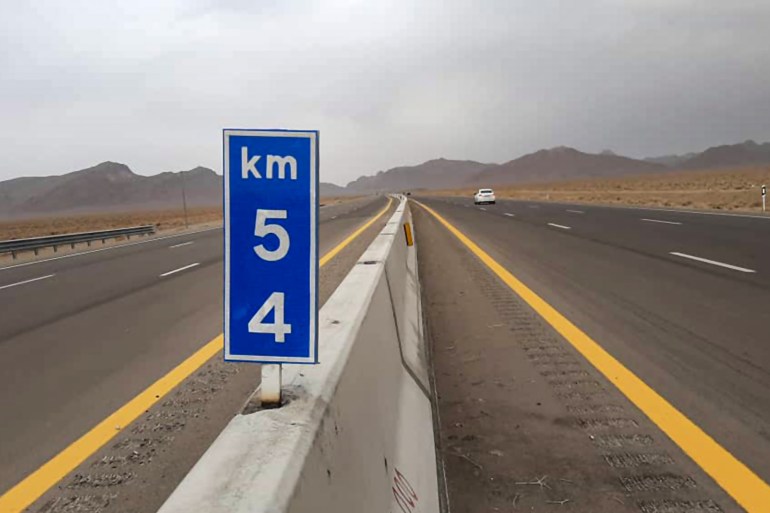More than two decades after Russia, Iran and India signed in 2000 the first document to establish the International North-South Transport Corridor (INSTC), Tehran last week began transporting goods from the Russian port of Astrakhan through the Caspian Sea, to the Iranian port of Anzali, and then transporting overland to Gulf waters, provided that the cargo is shipped by sea to the Indian port of "Nhava Sheva".
The head of the Iranian-Russian Salianka port in the Russian city of Astrakhan, Dariush Jamali, described the process of transporting goods through the "North-South" corridor as an initial trial to test the corridor, stressing that the transport process is coordinated and managed by the group of Iranian state shipping lines, and its regional offices in Russia. And India, is expected to take 25 days.
international corridor
The Russian shipment consists of two 12,192-meter containers carrying wooden plates weighing 41 tons, which had left St. Petersburg earlier, on their way to India.
Although Iran had announced the inauguration of the corridor last July and the transfer of a shipment of paper from Finland to India, by trucks from the Iranian port of Astara on the Caspian Sea to the Gulf waters via the train and then by sea to India, the project faltered for reasons that have not yet been announced.
The length of the corridor extending from St. Petersburg on the Baltic Sea through Russia, the Caspian Sea, Iran, and the Gulf waters to the Indian Ocean is 7200 km, and reduces the time period by about 20 to 30 days compared to the traditional corridor through the Egyptian Suez Canal, and reduces transportation costs by 2500 dollars per 15 tons of cargo, according to Iran's official newspaper.
The "North - South" corridor consists of a network of sea, land and railway lines to link India's Mumbai with the Eurasia region.
It is scheduled to be linked to the main line of the corridor by branch lines that penetrate Central Asia and Eastern Europe before reaching St. Petersburg in western Russia, and from there to European markets by land and sea.
The pass is characterized by short transportation time, low cost and security (Iranian Ministry of Roads)
Strategic importance
In light of the stifling sanctions that Russia and Iran are subjected to, the importance of the international corridor is not limited to trade, but has taken strategic and vital dimensions to break the Western siege and thwart the policy of maximum pressure, according to economic researcher Ghulam Reza Moghadam.
Moghadam explained to Al-Jazeera Net that the corridor had previously been activated, but its mission did not exceed the transport of goods between Russia and Iran since 2002 until now, due to technical obstacles and the lack of land lines and railways necessary to transport goods between Iranian ports from its north to its south.
Moghadam believes that the "North-South" corridor is characterized by short transportation time, low cost and security, in order to achieve the largest profit margin for the trading parties, adding that his country is determined to make the corridor a bridge for global trade from the Indian Ocean and East Asian countries through the Gulf states, then the Caucasus and Eurasia, to reach Eastern Europe.
The Iranian researcher concluded that his country enjoys a strategic position in global trade, as several international corridors pass through its territory from its south to its north and from its east to its west and vice versa, stressing that providing the necessary infrastructure would increase Tehran’s share of global trade.
Rail Transit
Meanwhile, Iranian President Ibrahim Raisi sponsored the inauguration of a railway transit route that connects Kazakhstan with Turkey and Europe through Iranian territory, stressing that one of his country's foreign policy priorities lies in expanding trade relations through Iranian territory as a "safe, fast and low-cost route."
In this context, the Tehran railway station received the first transit container transport train loaded with sulfur exports from Kazakhstan on its way to Turkey.
For his part, Iranian government spokesman Ali Bahadri Jahromi announced, in a tweet on Twitter, his country's intention to work to revive its historical position as the link in regional transportation.
A network of corridors to connect the neighborhood
For his part, the Iranian economist Bahman Arman described his country as a vital link between the continents of Asia and Europe and that it is located at the heart of several international corridors that would play an active role in global trade, criticizing previous Iranian governments for not completing the transit line connecting the Gulf waters and the western borders. shared with Turkey.
He explained, to Al-Jazeera Net, that the network of international corridors through Iran is able to link all neighboring countries, in addition to bringing the distances between the countries of East Asia and Eastern Europe, describing the network of corridors through Iranian territory as a strong competitor to the Egyptian Suez Canal.
Referring to Western sanctions on Russia, Arman considered the "North-South" corridor a link between India's Mumbai and Russia's Saint Petersburg, and called on his country to complete the Gulf water transit line - Bazargan border crossing with Turkey to supply European markets with Iranian energy.

